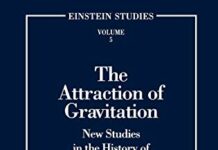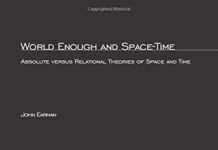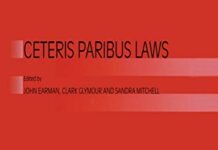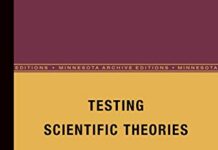
Ebook Info
- Published: 1995
- Number of pages: 272 pages
- Format: PDF
- File Size: 15.79 MB
- Authors: John Earman
Description
Almost from its inception, Einstein’s general theory of relativity was known to sanction spacetime models harboring singularities. Until the 1960s, however, spacetime singularities were thought to be artifacts of the idealizations of the models. This attitude evaporated in the face of a series of theorems, due largely to Stephen Hawking and Roger Penrose, which showed that Einstein’s general theory implies that singularities can be expected to occur in a wide variety of conditions in both gravitational collapse and in cosmology. In the light of these results some physicists adopted the attitude that, since spacetime singularities are intolerable, general relativity contains within itself the seeds of its own destruction. Others hoped that peaceful coexistence with singularities could be achieved by proving a form of Roger Penrose’s cosmic censorship hypothesis, which would place singularities safely inside black holes. Whatever the attitude one adopts toward spacetimesingularities, it is evident that they raise a number of foundational problems for physics and have profound implications for the philosophy of space and time. However, philosophers of science have been slow to awaken to the significance of these developments. Indeed, this is the first serious book-length study of the subject by a philosopher of science. It features an overview of the literature on singularities, as well as an analytic commentary on their significance to a number of scientific and philosophical issues.
User’s Reviews
Editorial Reviews: Review “…I enthusiastically recommend this important work to anyone, philosopher or scientist, interested in the foundations of spacetime. Not only does the book include discussions of fascinating topics previously neglected by philosophers, but it is also chock full of original arguments in both physics and philosophy.”–The Philosophical Review”This book should provide students of general relativity with a useful companion to the texts of Hawking and Ellis, Joshi and Clarke; professionals will also be interested in the different perspective it offers on work in global structure, and in its emphasis on points which can sometimes be lost in the detailed study of the mathematical structures involved.” –Mathematical Reviews”A worthwhile and recommended addition to collections on the philosophy of science.”–Choice”It is greatly to be hoped that this book, by setting out and elucidating the main problems, will stimulate more work in this area, so important for the understanding of the foundations of physics. Earman has shown in a most impressive way that the philosophy of science can develop only if it keeps closely in touch with the latest scientific advances.”–International Philosophical Quarterly From the Back Cover Almost from its inception, Einstein’s general theory of relativity was known to sanction spacetime models harboring singularities, which involve a breakdown in the very fabric of space and time and, consequently, a failure of the known laws of physics. Until the 1960s, however, spacetime singularities were thought to be artifacts of idealizations of the models. This attitude evaporated in the face of work by Stephen Hawking and Roger Penrose, whose theorems showed that Einstein’s general theory implies that singularities can be expected to occur in a wide variety of conditions in both gravitational collapse and in cosmology. In the light of these results, some physicists began to believe that, since spacetime singularities are intolerable, general relativity contains within itself the seeds of its own destruction. Others hoped that peaceful coexistence with singularities could be achieved by proving a form of Roger Penrose’s “cosmic censorship” hypothesis, which would place singularities safely inside black holes. Whatever the attitude one adopts toward spacetime singularities, it is evident that they raise foundational problems for physics and have profound implications for the philosophy of space and time. However, philosophers have been slow to awaken to the significance of these developments. Now John Earman, the noted philosopher of science, offers for the first time a book-length study of the subject. It features an overview of the literature on singularities, as well as an analytic commentary on their significance to a number of scientific and philosophical issues. About the Author John Earman is Professor of History and Philosophy of Science at the University of Pittsburgh. Read more
Reviews from Amazon users which were colected at the time this book was published on the website:
⭐By looking at the title of this book one would think that this is a semi-popular and for the beginner easy understandable book written for everyone interested in Relativistic Space-Times. This is far from being the case. This is not a book for everyone, rather it is a book written for physicists, philosophers or mathematicians with a good mathematical background of General Relativity (and of course also of Special Relativity). I would say that it would be especially interesting for someone who already knows Einstein’s theory of Relativity very well, or even is specialized in it, and wants to become a deeper understanding about not only the historical developement and the structure but also of the physical-philosophical concepts of this theory and it’s implications.Discussions of both Einstein’s Field Equations and the various resulting singularities of spacetime are presented,especially those singularities related to black holes, white holes, big-bang cosmology and horizon problems. Also inflationary cosmology and the question if this is really a solution of the horizon problem in cosmology are discussed very professionally. The physcics and mathematics of closed time-like curves, which result from singularities in connection with acausality, are discussed explicitly, the latter interesting for those who want to have a real representation of the physics of time travel both travelling in the future and the past. Among many other topics the singularity theorems of Penrose and Hawking and cosmic censorship are explained and why these singular points represent the “end” of spacetime. In order to understand all these topics properly a good knowledge of Topolgy, as it is represented in textbooks for mathematicians, is recommended.Earman himself explains in one sentence, addressed to the philosophers, the aims of his book very clearly (on page 23, I cite): “……..philosophical concerns about predictability and determinism, paradoxes of infinity, the common cause principle and the nature of scientific explanation, backward causation and time travel, etc. Once the connetions are revealed, it is hard to see how philosophers of science can continue to write on these topics without taking into account the implications the General Theory of Relativity” (end of citation). One should remember that the latter are the words of a philosopher. Indeed, this book is a very good example for philosophers to realize again the importance of studying very carefully and extensively the foundations of the science that they want to analyze before presenting a philosphical discussion about it in order that the whole enterprise will not end in what the famous philosopher J.J.C. Smart discusses in his remarkable book “Philosophy and Scientific Ralism” in chapter 1 entiteled “Philosophy and the Elimination of Nonsense”.
⭐
Keywords
Free Download Bangs, Crunches, Whimpers, and Shrieks: Singularities and Acausalities in Relativistic Spacetimes 1st Edition in PDF format
Bangs, Crunches, Whimpers, and Shrieks: Singularities and Acausalities in Relativistic Spacetimes 1st Edition PDF Free Download
Download Bangs, Crunches, Whimpers, and Shrieks: Singularities and Acausalities in Relativistic Spacetimes 1st Edition 1995 PDF Free
Bangs, Crunches, Whimpers, and Shrieks: Singularities and Acausalities in Relativistic Spacetimes 1st Edition 1995 PDF Free Download
Download Bangs, Crunches, Whimpers, and Shrieks: Singularities and Acausalities in Relativistic Spacetimes 1st Edition PDF
Free Download Ebook Bangs, Crunches, Whimpers, and Shrieks: Singularities and Acausalities in Relativistic Spacetimes 1st Edition





